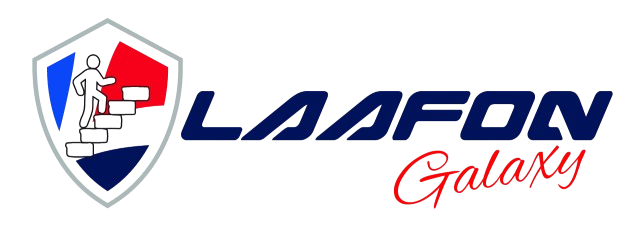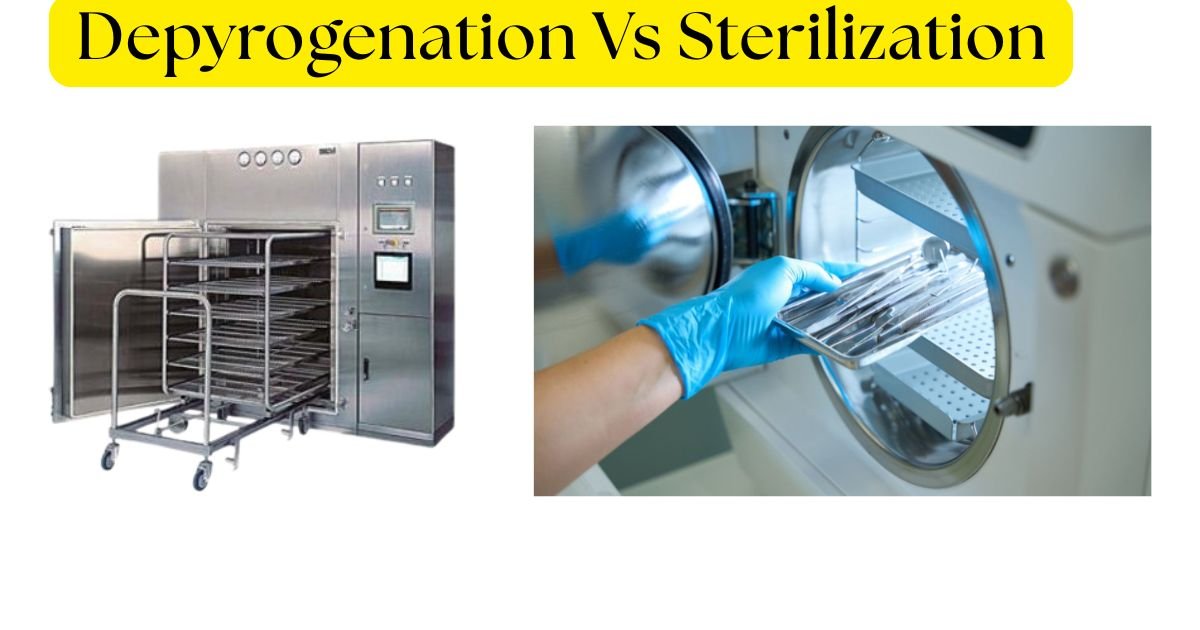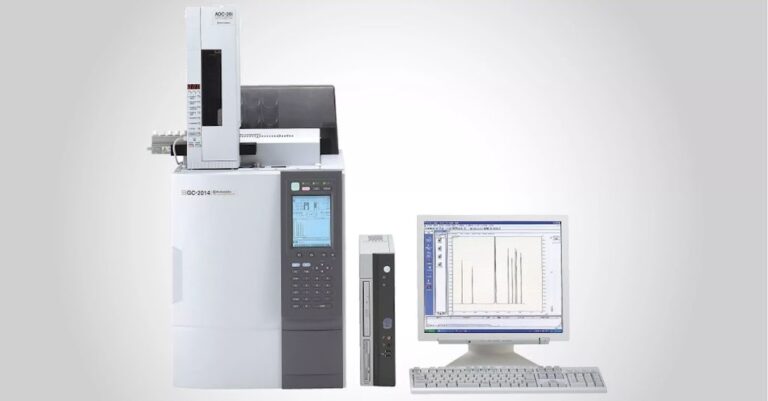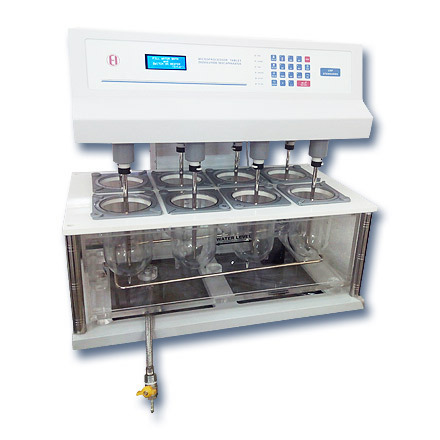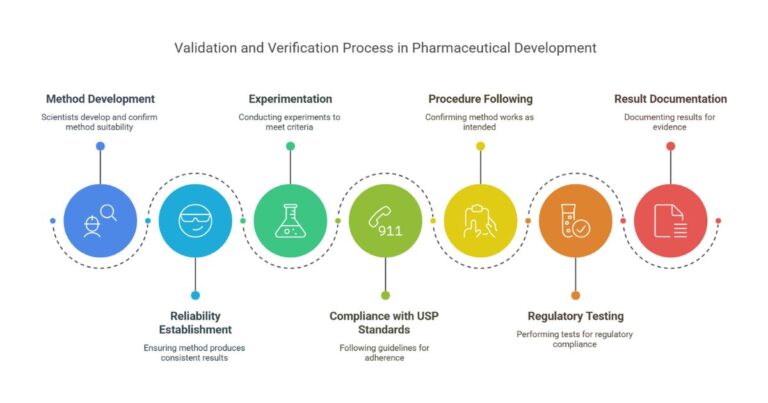Imagine running a sterile injectable line where everything looks perfect—vials are washed, sterilized, and ready. But hidden inside, trace endotoxins remain. A patient receives that “clean” drug and develops a dangerous fever, or worse, septic shock. That’s the invisible risk when we rely only on sterilization without depyrogenation.
Sterilization and depyrogenation are often confused in the pharmaceutical industry. Both are crucial, but they solve different problems: sterilization eliminates microorganisms, while depyrogenation removes fever-causing endotoxins. This guide breaks down the processes in simple terms, explores methods, provides regulatory insights, and helps you decide which process to use when.
Table of Contents
Sterilization vs Depyrogenation: Interactive Guide
Target: Microorganisms (bacteria, fungi, spores)
Goal: Eliminate living organisms
Target: Pyrogens (endotoxins, LPS)
Goal: Remove fever-causing molecules
Depyrogenation Temperature Requirements
Common Methods
Steam Sterilization
121-134°C, effective for glassware and instruments
Filtration
0.22 μm filters, ideal for heat-sensitive solutions
Dry Heat Tunnels
300-350°C continuous process for vials
Dry Heat Ovens
250°C/30 min, batch processing
Decision Matrix
Endotoxin Testing Methods
LAL Test
In vitro, highly sensitive, detects picogram levels
Rabbit Pyrogen Test
In vivo, measures fever response (less common now)
Regulatory Limit
≤ 0.5 EU/mL for parenteral products
Depyrogenation vs Sterilization: The Core Difference
| Feature | Sterilization | Depyrogenation |
|---|---|---|
| What it targets | Microorganisms: bacteria, fungi, spores | Pyrogens: endotoxins, lipopolysaccharides |
| Main goal | Eliminate living organisms | Remove fever-causing molecules |
| Common methods | Autoclaving, filtration, radiation | Dry heat ovens, depyrogenation tunnels |
| Limitation | Cannot reliably remove endotoxins | Does not kill microbes unless validated |
| Regulatory basis | USP <1211>, EU GMP Annex 1 | USP <1228>, European Pharmacopeia |
Sterilization and depyrogenation are not interchangeable. You can have a sterile vial that still contains pyrogens, which is unacceptable in injectables. Likewise, depyrogenation without sterilization leaves live microbes behind. Both are required in aseptic processing for safety and compliance [1].
Why Both Processes Are Essential in Injectables
Injectables bypass all natural body defenses. If microbes or pyrogens are present, patients face immediate risks:
- Microbial contamination → infections, abscesses, sepsis.
- Endotoxin contamination → fever, chills, septic shock, potentially fatal outcomes.
This is why regulatory bodies like the FDA, USP, and EMA mandate validated sterilization and depyrogenation steps in manufacturing sterile products. In modern facilities, the two processes complement each other. Think of them as twin shields protecting patient safety [2].
Sterilization: Methods, Strengths, and Limitations
Sterilization destroys all living microorganisms, but not necessarily their by-products. Common methods include:
1. Steam Sterilization (Autoclaving)
- Uses steam under pressure at 121–134 °C.
- Highly effective for most glassware, stainless steel instruments, and some liquids.
- Weakness: endotoxins survive, especially if trapped in glass crevices.
2. Dry Heat Sterilization
- Conducted at 160–180 °C for 2–4 hours.
- Useful for powders, oils, and metal instruments.
- Overlaps with depyrogenation if higher temps are used.
3. Filtration
- Sterilizing-grade filters (0.22 µm).
- Ideal for heat-sensitive solutions.
- Limitation: removes microbes but not pyrogens.
4. Radiation (Gamma/E-Beam)
- Used for medical devices and some APIs.
- Effective for sterilization but not pyrogen removal.
Bottom line: Sterilization ensures microbial safety but cannot be relied on for endotoxin control [6].
Depyrogenation: Methods, Strengths, and Limitations
Depyrogenation is the destruction or removal of endotoxins, usually lipopolysaccharides (LPS) from Gram-negative bacteria.
1. Dry Heat Depyrogenation (Ovens & Tunnels)
- Most validated method.
- Typical cycles:
- 250 °C for 30 minutes
- 200 °C for 60 minutes
- 180 °C for 4 hours
- Achieves ≥ 3-log reduction in endotoxins.
- Used for glass vials, ampoules, and syringes.
2. Depyrogenation Tunnels
- Continuous process for large-scale vial depyrogenation.
- Uses unidirectional hot air at 300–350 °C.
- Fully automated with built-in monitoring and alarms.
3. Filtration & Chromatography (for solutions)
- Used for heat-sensitive formulations.
- Expensive and complex; requires rigorous validation.
4. Chemical Methods (limited use)
- Strong alkali washes or detergents may reduce endotoxins.
- Typically combined with heat for effectiveness.
Depyrogenation is tougher than sterilization because endotoxins are heat-stable and resistant to most conditions [3].
Regulatory Guidelines & Validation Standards
Both USP <1228> and European Pharmacopeia lay down clear depyrogenation standards:
- Minimum performance standard: Demonstrate ≥ 3-log endotoxin reduction.
- Recommended cycles: 250 °C/30 min or equivalent.
- Validation methods: Spiking studies with known endotoxin loads, tested pre- and post-process using LAL assay.
Sterilization guidelines (USP <1211>, EU GMP Annex 1) require:
- Full microbial inactivation.
- Sterility assurance level (SAL) of 10⁻⁶.
- Routine biological indicators (e.g., Geobacillus stearothermophilus spores for autoclave).
Together, these regulations ensure both microbial and endotoxin control in injectables [4].
Choosing the Right Process: Practical Decision Matrix
Decision Matrix
| Product/Material | Sterilization Method | Depyrogenation Method | Notes |
|---|---|---|---|
| Glass vials/ampoules | Autoclave | Dry heat tunnel/oven | Best practice: combine both |
| Stainless steel equipment | Autoclave | Dry heat oven (if needed) | Usually no pyrogen risk if cleaned |
| Heat-sensitive solutions | Filtration | Chromatography/ultrafiltration | Expensive but necessary |
| Powders & oils | Dry heat sterilizer | Dry heat sterilizer (higher temp) | Dual purpose possible |
In short: if it’s glass, use a tunnel; if it’s liquid, validate filtration + endotoxin removal method; if it’s heat-stable, dry heat does both jobs.
Testing and Detection of Endotoxins
To confirm depyrogenation effectiveness, two tests are common:
- LAL Test (Limulus Amebocyte Lysate) – In vitro, highly sensitive, detects picogram levels of endotoxin.
- Variants: gel-clot, chromogenic, turbidimetric.
- Rabbit Pyrogen Test (RPT) – In vivo, measures fever response in rabbits.
- Used less often today due to ethical concerns.
Regulatory limit: For parenteral products, ≤ 0.5 EU/mL endotoxin contamination is acceptable (FDA guidance).
These assays are mandatory for validation and routine QC [7].
Case Study: Depyrogenation Tunnel in a Large-Scale Injectable Plant
A sterile injectable plant in India producing 2 million vials/month installed a Bosch HQL depyrogenation tunnel.
- Operating temperature: 320 °C.
- Cycle time: 4–6 minutes per vial.
- Fully automated with HEPA filters and unidirectional airflow.
- Achieved ≥ 3-log endotoxin reduction consistently in validation studies.
This case demonstrates how continuous depyrogenation tunnels improve throughput, ensure compliance, and reduce operator intervention compared to batch ovens.
Conclusion: Working Together, Not Against Each Other
Sterilization Vs depyrogenation are not competing processes—they’re complementary safeguards. One eliminates living microbes, the other neutralizes toxic residues. For injectable manufacturing, ignoring either is unacceptable.
By understanding their differences, applying the right method for each material, and validating cycles according to pharmacopeial standards, pharma companies can ensure patient safety and regulatory compliance.
In short: sterilization makes products safe from life; depyrogenation makes them safe from death.
FAQ
What happens if depyrogenation is skipped in injectable manufacturing?
Skipping depyrogenation can leave behind endotoxins in glassware or vials, even if sterilization is performed. These endotoxins can cause febrile reactions, sepsis, and regulatory non-compliance, making depyrogenation a non-negotiable step in aseptic processing.
Can sterilization and depyrogenation be validated together in one process?
Yes. In some cases, especially with dry heat tunnels, the process can be validated for both microbial inactivation and endotoxin destruction simultaneously. However, regulators typically require separate validation studies to demonstrate each outcome independently.
How often should depyrogenation equipment like tunnels or ovens be revalidated?
Regulatory guidelines recommend periodic revalidation—typically annually or after any major maintenance, change in load patterns, or cycle parameters. Routine monitoring with endotoxin challenge tests is also required to maintain confidence in ongoing performance.
What are common pitfalls during depyrogenation validation?
Frequent issues include improper vial loading that restricts hot air circulation, inaccurate temperature mapping, and using insufficient endotoxin challenge concentrations. These mistakes can lead to failed validation and potential product recalls.
Are there alternatives to dry heat depyrogenation for heat-sensitive products?
Yes. For products that cannot withstand high heat, options include endotoxin-specific filtration, ultrafiltration, or chromatography. However, these are more complex, expensive, and require robust validation to prove consistency and effectiveness.
References
- Afton Scientific – Sterilization vs Depyrogenation
- Industrial Pharmacist – Sterilization and Depyrogenation
- American Pharmaceutical Review – Endotoxin Destruction
- USP <1228> Depyrogenation
- European Pharmacopeia Standards
- Wikipedia: Sterilization (Microbiology)
- Wikipedia: Depyrogenation
